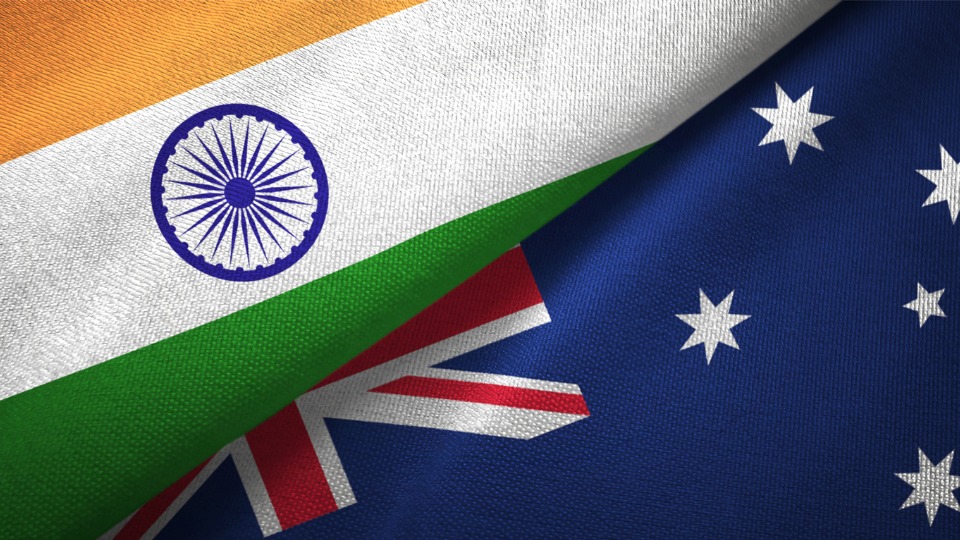
India, Australia agreement could be a red rag for China

India’s landmark agreement with Australia on defence cooperation comes at a time when New Delhi is engaging with its northern neighbour China on resolving a spat on the border at Ladakh.
In disputes like these with China, will the Mutual Logistics Support Agreement (MLSA) with Australia in any way help India? Does it boost New Delhi’s strength to take on a powerful neighbour like Beijing, both of which share an unpredictable relationship?
Obviously the tie-up with Australia will not play any role in the resolution of the ongoing dispute. If at all, it would have only served to irritate Beijing, possibly exacerbating the stand-off. This is because the India-Australia agreement is part of a larger Western alliance involving among others the United States, France, India, Australia, Singapore and Japan that is seen by China as a potential challenge to its rising power across the world, especially in South Asia and the Pacific.
Related news: India and Australia sign landmark deal to access each other’s bases
It is clear that in the event of a border stand-off with China, as is the case now, Australia can not, and will not, pitch in. Neither can the United States, though President Donald Trump offered to mediate and later discussed the issue with Indian Prime Minister Narendra Modi.
New Delhi has to necessarily rely on the existing mechanism with China to defuse the stand-off. Also, on the face of it, neither country stands to benefit from escalating the issue. Alongside the decades old border dispute, there are several other points of potential conflict between India and China, like attempts by Beijing in recent years to dominate the political narrative in the South Asia region, long considered by Delhi as its backyard.
China is actively entrenching itself in Sri Lanka, Nepal, Bangladesh and the Maldives besides engaging in a possibly deeper involvement in Bhutan. The government in Beijing typically patiently waits for India to slip up only to move in to capitalise on it, as in Lanka and Nepal.
While one would expect India to do some introspection and figure out where it has slipped up over the last decade or so, it has taken the easier way out by tying up with the US-led Western alliance in an attempt to appear stronger than what it actually is. With the backing of powerful friends, it is possibly the hope of the government in New Delhi that it will protect India from any Chinese misadventure even while benefiting on other fronts including trade and commerce.
India’s hopes would be akin to the tail trying to wag the dog. For, the US and its soul mates like Australia would like to ally with New Delhi to serve their geo-political interests. For example, under the US’s direction, as part of the US-Indo Pacific Command India is already policing the high seas to its east in international waters covering the Pacific islands and the South Pacific much to China’s chagrin. Beijing has not taken kindly to India’s oil exploration off Vietnam too, seeing it as an intrusion in its area of influence.
Related news: Ladakh standoff: India, China to hold Lt. General-level talks on June 6
For the last at least two decades, the US-led allies have been distraught at the growing influence of China and its government’s attempts to politically and militarily dominate the South China sea. Washington’s closest ally in the region, Japan, with its own contentious relationship with Beijing, feels threatened by what it sees as China’s intimidatory tactics. Similarly, Vietnam, Indonesia and the Philippines too experience frequent stand-offs with China which claims several disputed islands in the area as its own.
The umbrella-alliance is important for the US as it can outsource the policing in the high seas to its partners including India and Australia hoping it can dilute, if not neutralise China’s threat. Similarly, for Australia the tie up is convenient as it gives extra leeway for its naval ships in the region as they can berth in Indian ports for a breather and fresh supplies. India, rather than any direct benefit to itself, serves a larger geopolitical purpose dictated by Washington in its battle of attrition with Beijing.
There is no gainsaying that agreements like the latest with Australia are accompanied by a feel-good factor. China may be irked, but the establishment in Beijing would still be practical enough to realise that it is New Delhi’s prerogative to tie up with anyone it wants. Moreover, it is an expression of a nation’s sovereignty. But, in practical terms the potential benefits for India are still somewhat cloudy.
Related news: India, Australia ink landmark defence pact after Modi-Morrison online summit
The real test for India will come if tensions rise in the South China sea and its environs in the Pacific. In a crisis situation, the US will expect India to pitch in to actively engage with China as part of the alliance. That will be a tough call for India as it would mean antagonising Beijing, leading to its own repercussions on the border and on overall ties between the two. Even if India merely opens it port facilities to Australian ships when there is tension if not conflict, Beijing will most likely see that as an hostile act.
Given the historically fragile nature of India’s border with China and the economic interdependence between the two, any outcome is possible if India takes on China as part of a larger western alliance. Hopefully, such a scenario will not come to pass. For, if it did, either one of the two or both will have to suffer a bloody nose.

